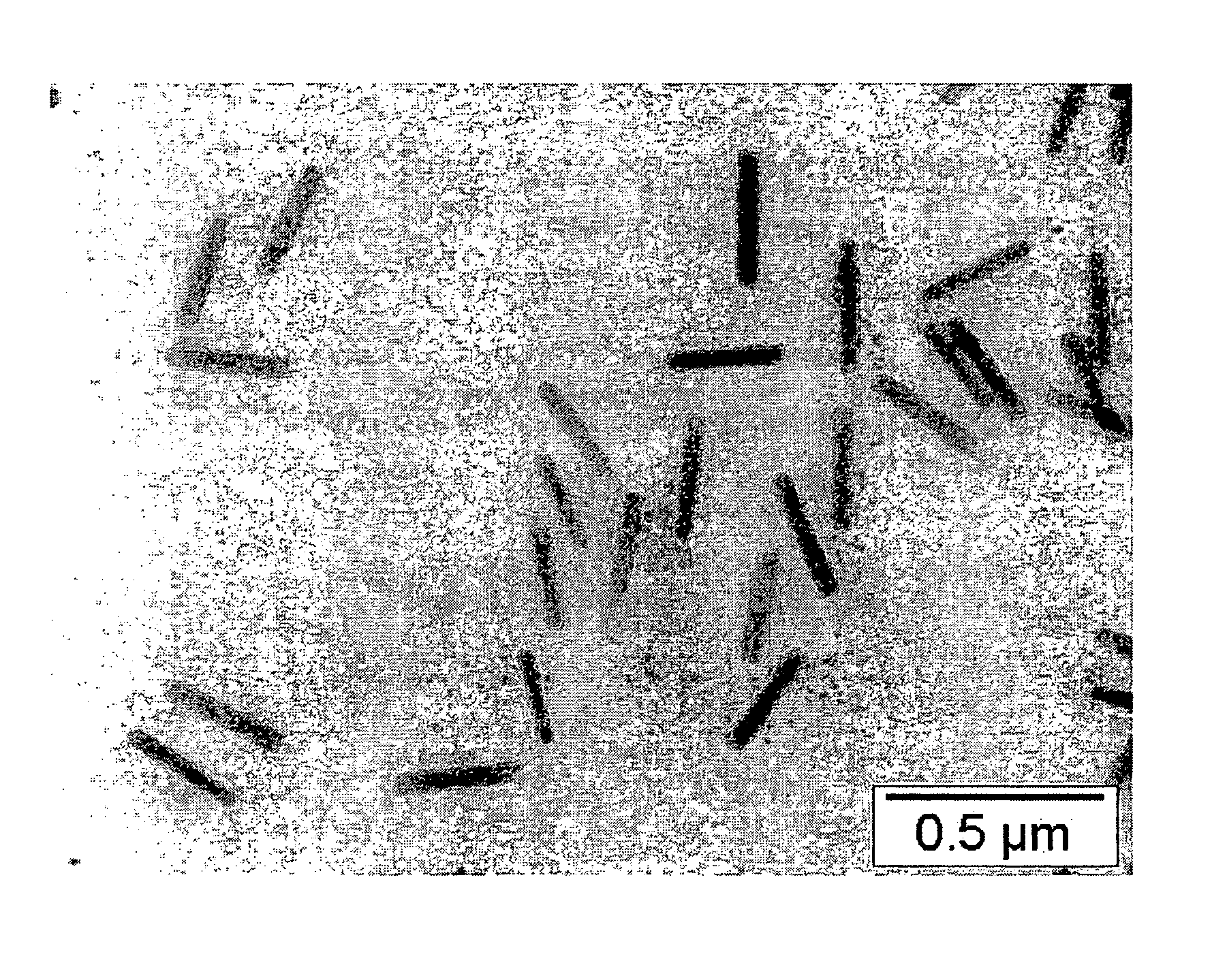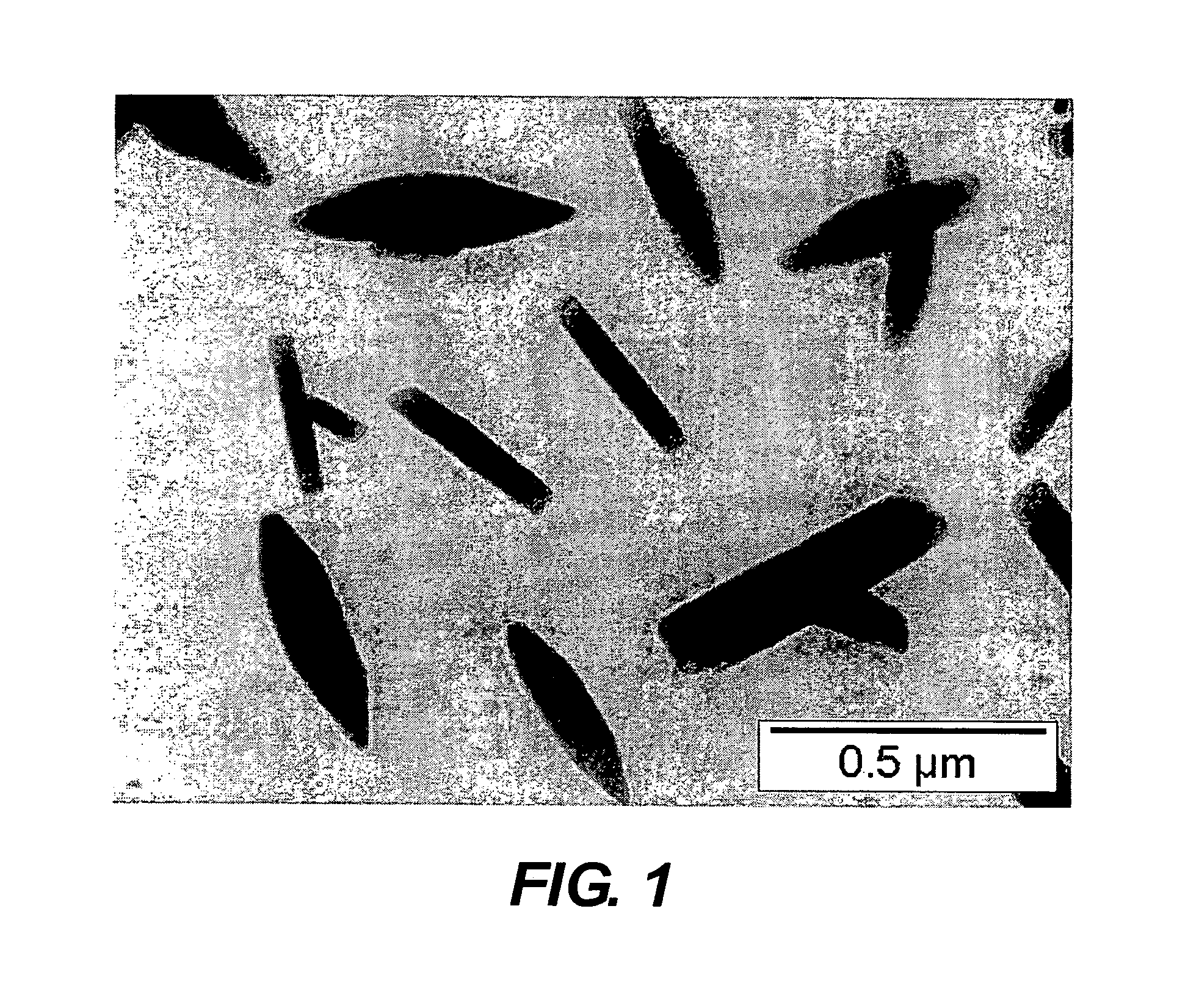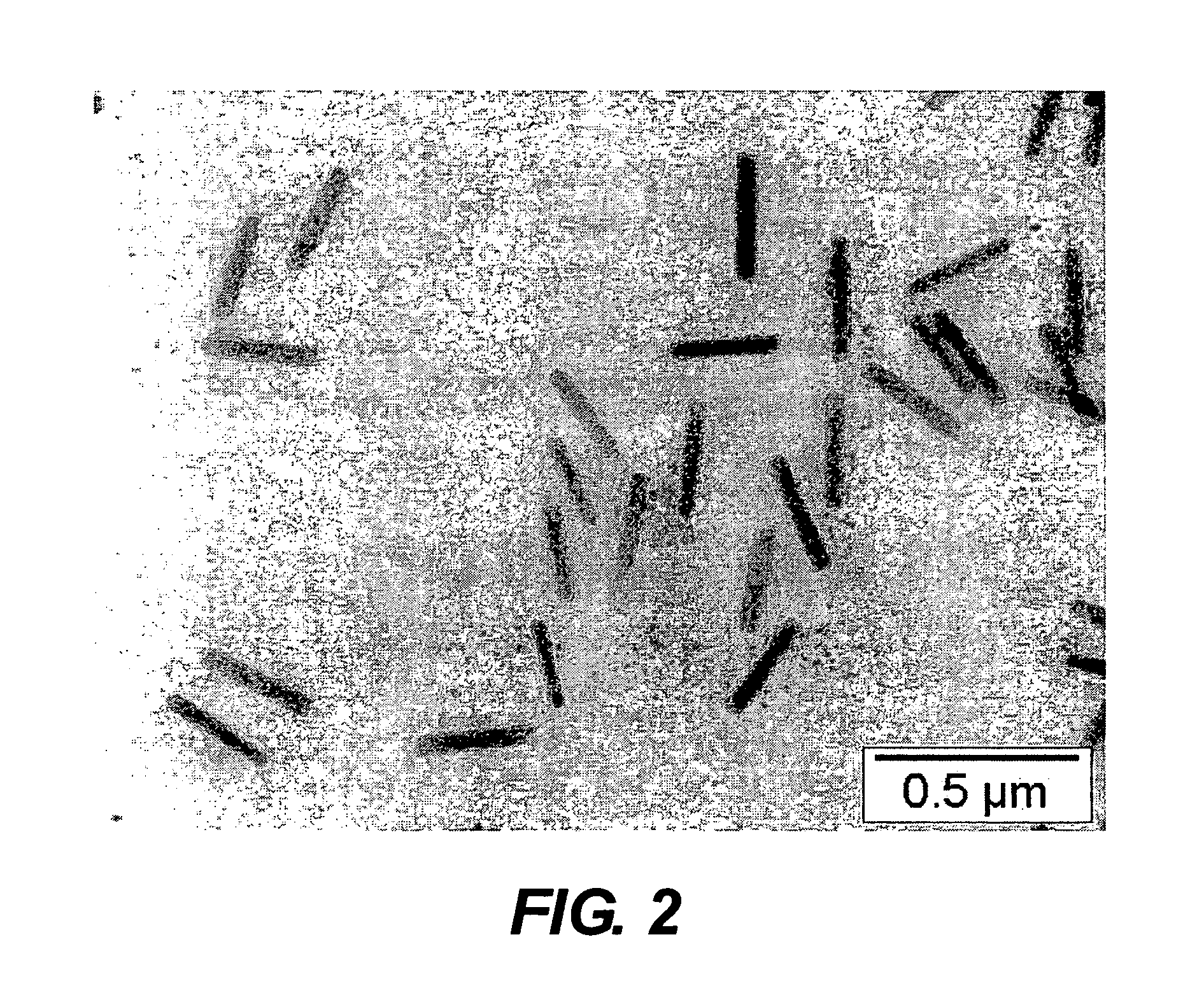Thermally developable materials containing organic silver salts with rod-like morphology and method of making and using
a technology of organic silver salts and developable materials, which is applied in the field of high-speed thermally developable materials, can solve the problems of distinctly different problems, increased formation of various types of “fog” or other undesirable sensitometric side effects, and much effort in the preparation and manufacture of photothermographic materials, and achieves superior sensitometric properties, low dmin, and high dmax
- Summary
- Abstract
- Description
- Claims
- Application Information
AI Technical Summary
Benefits of technology
Problems solved by technology
Method used
Image
Examples
example 1
Preparation of AgBZT Dispersion
[0258]Aqueous gelatin dispersions of silver benzotriazole (AgBZT) A through F (TABLE II below) were prepared as follows:
[0259]A stirred reaction vessel was charged with 900 g of lime-processed gelatin and 6000 g of deionized water. Solution A containing 216 g / kg of benzotriazole, 710 g / kg of deionized water, and 74 g / kg of sodium hydroxide was prepared. The mixture in the reaction vessel was adjusted to a pH of 9.0 with 2.5N sodium hydroxide solution. The pAg was adjusted by addition of varying amount of Solution A (TABLE II). The temperature of the reaction vessel was maintained at approximately 50° C.
[0260]Solution B containing 362 g / kg of silver nitrate and 638 g / kg of deionized water was also prepared. Solutions A and B were then added to the reaction vessel by controlled double-jet addition at a constant silver nitrate flow rate of 25 ml / min for 20 minutes while maintaining constant pAg and pH in the reaction vessel. The flow rate of Solution B wa...
example 2
Preparation of Photothermographic Materials
[0270]Photothermographic materials of this invention and Comparative materials were prepared and evaluated as follows:
[0271]Solution A: Each dispersion of silver benzotriazole and gelatin (35% gelatin / 65% water) prepared above was placed in a beaker and heated to 50° C. for 15 minutes to melt the dispersion. A 5% aqueous solution of 3-methylbenzothiazolium iodide was added. Each dispersion was mixed for 15 minutes and cooled to 40° C. The sodium salt of benzotriazole was added and the dispersions were stirred again for 15 minutes followed by addition of Compound T-1. Mixing for another 15 minutes was followed by addition of 2.5 N sulfuric acid to adjust the dispersion pH to 5.5. Zonyl FSN surfactant was then added.
[0272]Solution B: A portion of the tabular-grain silver halide emulsion prepared as described above was placed in a beaker and melted by heating at 40° C.
[0273]Solution C: The dry materials listed in TABLE IV below were added to w...
example 3
Preparation of Photothermographic Materials Using Iridium-Doped Ultra-Thin Tabular Grain Silver Halide Emulsions
[0281]An ultrathin tabular grain silver halide emulsion was prepared as described in copending and commonly assigned U.S. Ser. No. 10 / 826,708 (Olm et al, noted above ).
[0282]A vessel equipped with a stirrer was charged with 6 liters of water containing 4.21 g of lime-processed bone gelatin, 4.63 g of sodium bromide, 75.6 mg of potassium iodide, a known antifoamant, and 1.25 ml of 0.1 molar sulfuric acid. It was then held at 39° C. for 5 minutes. Simultaneous additions were then made of 25.187 ml of 0.6 molar silver nitrate and 19.86 ml of 0.75 molar sodium bromide over 30 seconds. Following nucleation, 50 ml of a 0.58% solution of the oxidant Oxone was added. Next, a mixture of 0.749 g of sodium thiocyanate and 30.22 g of sodium chloride dissolved in 136.4 g of water were added and the temperature was increased to 54° C. over 9 minutes. After a 5-minute hold, 100 g of oxid...
PUM
| Property | Measurement | Unit |
|---|---|---|
| average aspect ratio | aaaaa | aaaaa |
| diameter | aaaaa | aaaaa |
| length | aaaaa | aaaaa |
Abstract
Description
Claims
Application Information
 Login to View More
Login to View More - R&D
- Intellectual Property
- Life Sciences
- Materials
- Tech Scout
- Unparalleled Data Quality
- Higher Quality Content
- 60% Fewer Hallucinations
Browse by: Latest US Patents, China's latest patents, Technical Efficacy Thesaurus, Application Domain, Technology Topic, Popular Technical Reports.
© 2025 PatSnap. All rights reserved.Legal|Privacy policy|Modern Slavery Act Transparency Statement|Sitemap|About US| Contact US: help@patsnap.com



